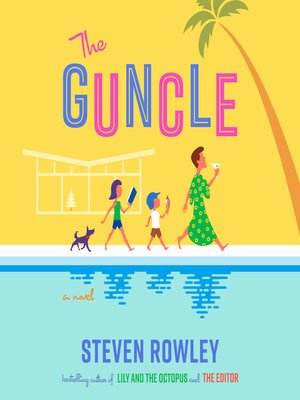


He also reminds us that love comes – wondrously – in multiple forms. As in “Lily,” he reminds us that love, even though it entails the possibility of painful loss, is well worth the risks.

The initial setup is grave, but rest assured that Rowley quickly adds levity. In “The Guncle,” he doesn’t just flirt with sentimentality, he invites it to move right in. Rowley hits the sweet spot between hilarity and heart in this endearing charmer about a famous sitcom star who becomes the reluctant, unconventional guardian of his niece and nephew for a summer.Īs he demonstrated in “Lily and the Octopus” (2016), his debut novel about an adored pet dachshund’s illness, and “The Editor” (2019), about a struggling young writer whose editor, none other than Jacqueline Kennedy Onassis, helps unlock his career and personal life, Rowley knows how to tug heartstrings.

But my children’s beloved guncle – that is, gay uncle – sure did. And that takes a lot of work. Today’s lead story, as arduous as it was, is an attempt to do that – to understand an important part of America just a little bit better, to help open the door to progress for all.ĭo you know what a guncle is? I didn’t before I read Steven Rowley’s heartwarming new novel. Finding answers will be impossible without understanding those deeper forces. The roots of violence everywhere are as much mental as political, influenced by culture and values. But that same rule applies to all regions – in the U.S. To ensure he got the story right, Patrik went back a second time. What we found was a portrait not of policies or legislative bills, but of an underlying mental landscape and how that has led to higher rates of violence. Why?In traveling to Nashville, Tennessee, and Alexander City, Alabama, Noah Robertson and Patrik Jonsson sought to show different faces of violence in the South, in large cities and rural hamlets, without falling into stereotypes or shallow narratives. And within these trends, one sticks out for its clarity and constancy: The American South has dramatically higher levels of violence. There is no single “gun violence problem” in the United States, but different challenges in different places. Rather, it is a product of the subject: the roots of violence. American conversations about gun violence – particularly mass shootings – often revolve around gun laws and mental health.But the closer we looked, the more we saw something else. Today’s lead article was not one of those stories. That’s not criticism. An idea emerges, and with a minimum of fuss, it is done. Sometimes, a story comes together with kinetic beauty.


 0 kommentar(er)
0 kommentar(er)
